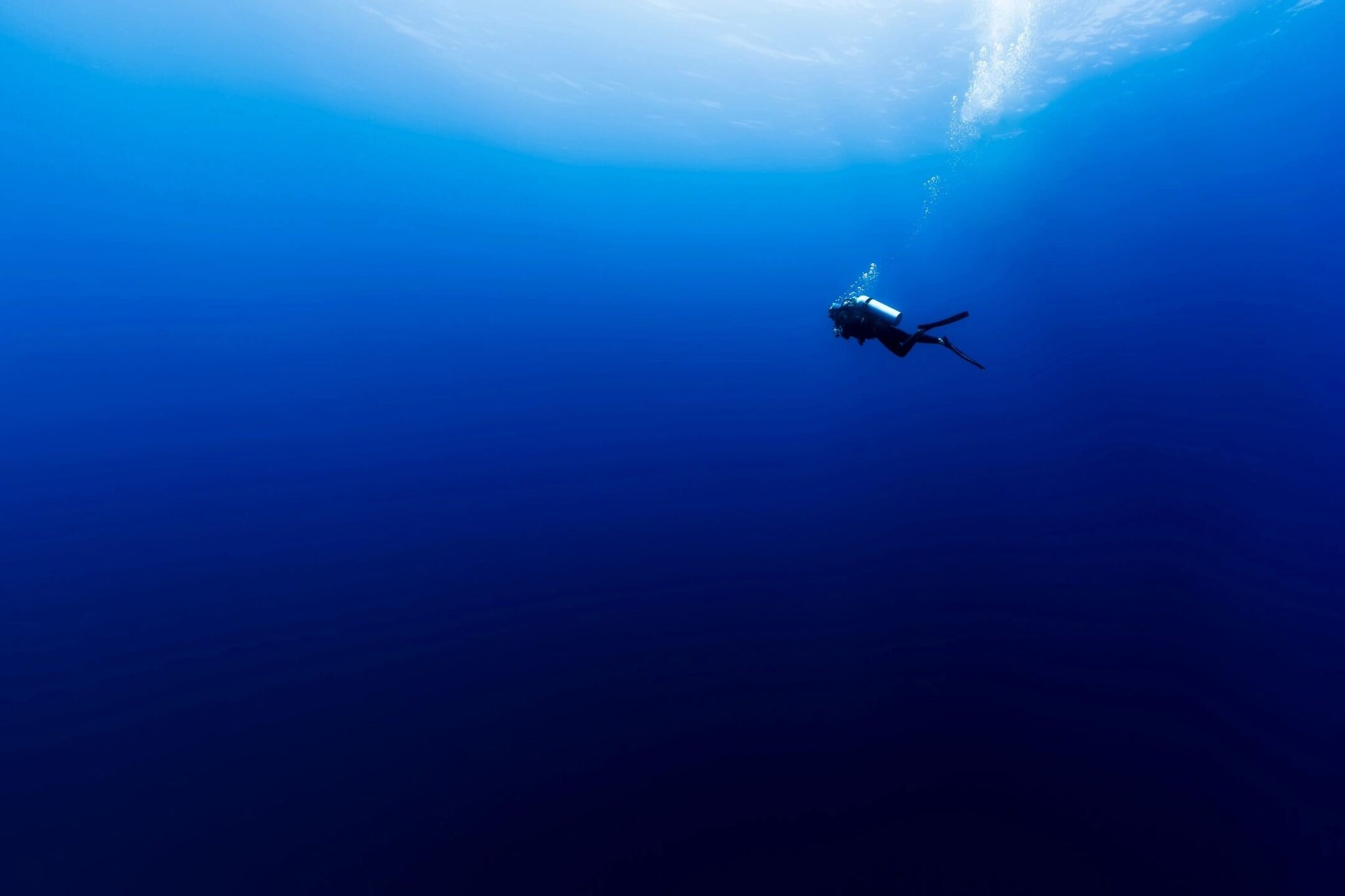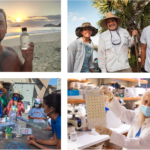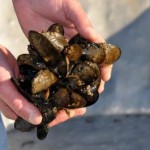Undiscovered Species of the Deep Sea: Can We Find Them?
Researchers identified over five thousand previously undiscovered species in a sample area of the CCZ region of the ocean, and they predict more are there to be found.
By Amelia Hersant
There is a well-known saying that we know more about the surface of Mars than we do the bottom of Earth’s oceans. New research is helping us to understand just how much we don’t know about this intriguing habitat.
Our’s is a predominantly water planet, with 71 percent of the Earth’s surface covered in water. Of this, 96.5 percent is held in the oceans. Such a statistic is more digestible, but no less mind boggling, when you consider that one region of the ocean, known as the Clarion-Clipperton Zone (CCZ), is considered to be around 6 million km2 (about 2.3 million mi2) in area. This is roughly twice the size of India, and it reaches depths of between 4,000 and 6,000 meters (about 12,000 to 18,000 feet). Located between Hawaii and Mexico, the CCZ plays an important role in researchers’ understanding of the ocean, which is the Earth’s largest ecosystem.
Muriel Rabone, Data and Sample Coordinator at the Natural History Museum in London, and a team of researchers compiled existing data about animal biodiversity in the CCZ. They reviewed over 100,000 records of creatures in this area to identify a total of 5,578 animal species. Of these, 436 are named species. This leaves a startling 5,142 species that are new to science and hence currently unnamed. Even more staggering is that statistical models predict total biodiversity in the CCZ to be between 6,233 and 7,620 species. This suggests upwards of 655 completely new species waiting to be discovered.
Researchers used this data to create the CCZ Checklist, the first comprehensive inventory of species in this area. It details the known species and provides a framework to help scientists in identifying new species. Such a checklist is vital in an area as at risk as the CCZ, which is a resource-rich area that is already being widely exploited by potentially destructive deep-sea mining operations.
What undiscovered species did they find?
Not only does this research produce some fascinating overall numbers but it goes a step further to illustrate the types of animals that these previously undiscovered species are. It shows that most of the species new to science will be found under the phylum (the third highest classification category) of Annelida. Species under the phylum Annelida are worms with repeating segments throughout their bodies. These include earthworms and leeches.
The next two most common phyla of the unnamed, no-longer undiscovered, species are Arthropoda and Nematoda. Arthropoda are invertebrate animals with hard exoskeletons. Known examples of arthropods in water include lobsters, crabs, and barnacles. Species under the phylum Nematoda are roundworms, many of which are parasitic such as hookworms and pork worms.
Other, more obscure, unnamed species to be found in the CCZ include those under the phyla Tardigrada (these micro-animals are invertebrates nicknamed “water bears”) and Ctenophora (also known as “comb jellies,” these invertebrates have been found to range between 3mm and 1m, or about 1/8 inch to 3 feet).
These are just some examples of the 27 different phyla believed to be living in the CCZ. Each unique species under these phyla will have its own physiology, genealogy, and characteristics that allow it to interact with and add to the spectacular ecosystem that it inhabits.
Why were they undiscovered species?
Deep-sea environments are notoriously difficult to access. This has resulted in a significant lack of data with most focusing on central and eastern regions of the CCZ at depths that appear to correlate with the mining contracts, likely because these areas are more accessible. Such uneven distribution of data means that there are areas of the CCZ that have been mostly unexplored.
In addition to the issues of actually being able to see the animals, there are problems with classifying them too. Classification has advanced to include two key components: morphological (relating to anatomy) and molecular (relating to genome sequencing). The ideal standard would be to differentiate an unnamed, previously undiscovered species from existing species on both levels, but collecting a new species in order to analyze its DNA is very difficult. As such, some previously undiscovered species may only be differentiated based on morphology alone. This leads to problems with what are known as cryptic species—those that have similar or identical morphology, or anatomy, but different molecular genealogy. So some species new to science may hide in plain sight behind already known species.
Ultimately, these are wild animals who come and go as they wish and who are not so inclined to float still while researchers photograph or collect them. They are phenomena worthy of patience to discover and, hopefully, maybe one day understand.
What risks do undiscovered species face?
When, and even if, such understanding will come of the newly identified and yet to be discovered species is another question entirely. Deep-sea mining in the CCZ for the purpose of exploiting minerals began in the 1960s. The area contains a rich supply of resources such as cobalt and nickel that are used for a range of technology across a variety of industries.
As demand for these resources has increased, so too have the efforts to obtain them. The mining area of the CCZ is the largest such area in the sea, spanning 1.2 million km2 (about half a million mi2).
The scale of the damage and disruption caused by mining activities is not currently known, nor has it been extensively researched. It is difficult to identify the damage that such operations may be doing to species that we do not even know exist yet. However, the acts of mining involve removing resource-rich nodules from the sea floor, which could result in destruction of marine life and damage to the habitat of the seabed that such life relies upon.
What next for the CCZ and deep-sea exploration?
The CCZ checklist provides a base upon which further classification of unnamed and as-yet undiscovered species can be built. Despite the current mining activity, the CCZ is one of few areas in the world’s oceans where the wilderness remains relatively intact. This makes it a fairly unique ecosystem in the modern climate and offers significant exploration opportunities.
With the ever-increasing development of new technologies, such opportunities will become more accessible to researchers both physically and conceptually. Ocean scientist Roberto Danovaro has suggested that researchers are entering into a “golden age” of deep-sea research.
For the CCZ, researchers have 5,142 new species to study, classify, and name; and over 655 species yet to discover. This is a daunting but exciting task, and one that researchers will likely be working on for generations to come.
This provides researchers with plenty of chances to identify and protect species new to science and, ultimately, to understand more about the incredible world around us.
This study was published in the peer-reviewed journal Current Biology.
References
Danovaro, R., Snelgrove, P. V. R., & Tyler, P. (2014). Challenging the paradigms of deep-sea ecology. Trends in Ecology & Evolution, 29(8), 465–475. doi:10.1016/j.tree.2014.06.002
Exploring Our Fluid Earth. Phylum Arthropoda. https://manoa.hawaii.edu/exploringourfluidearth/biological/invertebrates/phylum-arthropoda
Exploring Our Fluid Earth. Worms: Phyla Platyhelmintes, Nematoda, and Annelida. https://manoa.hawaii.edu/exploringourfluidearth/biological/invertebrates/worms-phyla-platyhelmintes-nematoda-and-annelida
NOAA Ocean Exploration. Deep-sea mining interests in the Clarion-Clipperton Zone. US Department of Commerce. https://oceanexplorer.noaa.gov/explorations/18ccz/background/mining/mining.html
Rabone, M, Glover, A. G., & Horton, T. (2023). Clarion-Clipperton Zone Species Checklist. Accessed at https://www.marinespecies.org/deepsea/CCZ/
Rabone, M., Wiethase, J. H., Simon-Lledó, E., Emery, A. M., Jones, D. O. B., Dahlgren, T. G., Bribiesca-Contreras, G., Wiklund, H., Horton, T., & Glover, A. G. (2023). How many metazoan species live in the world’s largest mineral exploration region? Current Biology, 33(12), 2383–2396.E5. doi:10.1016/j.cub.2023.04.052
Stillman, D. (2009, October 8). Oceans: The Great Unknown. NASA. https://www.nasa.gov/audience/forstudents/5-8/features/oceans-the-great-unknown-58.html
Water Science School. (2019, November 13). How much water is there on Earth? USGS. https://www.usgs.gov/special-topics/water-science-school/science/how-much-water-there-earth
About the Author
Amelia Hersant is an office worker by day but a surfer, traveler, and all around lover of the great outdoors in her spare time. When all is said and done, there is nothing she likes more than stretching out by the sea to read about the adventures of humans and animals alike.




